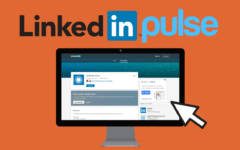Why is privacy important on Facebook?
Imagine that you’re sitting at home, watching TV. A random stranger walks into your home, followed by another and another. How do you prevent these strangers from coming into your home uninvited? You close and lock the door. By doing so, it allows you to choose who to keep out and who to let in.
For more on why staying private on the Internet is important in general, see our “What is Internet Privacy” article.
In additon, for other things to consider and tips for what to do when trying to keep your privacy intact on social networks like Facebook, see our “Social Media and Social Network Privacy” article.
How do Facebook’s privacy settings work?
Facebook’s privacy settings work in much the same way as the home security system in our introduction. They allow you to decide who does and does not get to see your information and activity on Facebook, such as your profile, status updates, comments, and events. There are four main sharing options:
-
Only me: Anything shared with this option will only be visible to you.
-
Lists: You can create custom lists of friends with whom you may want to share certain information while hiding it from the rest of your friends. An example would be a list of Facebook friends that are family members. For more on lists, see our Facebook Lists tutorial.
-
Friends: The most common option. All of your friends on Facebook will have access to any information shared using this option.
-
Public: The least secure setting. Everyone on Facebook will be able to see any information that you share using this option, even if they’re not on your friends list.
Examples of how you could use your Facebook privacy settings
-
You may want to keep some personal information private. Maybe you want to keep your birth year amongst friends, but wouldn’t mind sharing the day and month globally. Many people on Facebook only allow their personal information to be viewed by friends, meaning that if someone stumbles upon their profile and they aren’t that person’s “friend,” they won’t see much past a name and profile picture.
Here’s an example of what someone who is not your friend on Facebook would see if you make your Profile available only to friends.

And here’s what people on your friends list would see if they visited your Profile.

Note that in this profile screenshot, they can see all of the “About” information, “Photos”, and Timeline posts that aren’t just about updating the profile picture.
-
Photos, status updates, comments, and anything you post yourself on Facebook can have custom privacy settings. Let’s say that you have some great new photos of your kids, but you only want to share them with your friends, or maybe a custom list of family members. By using Facebook’s privacy settings, you can show the photos only to people whom you think would be interested in them.
-
You can hide embarrassing or unflattering posts that you could hurt your character. Perhaps you made a silly status update, but only your close friends would get the joke. By using Facebook’s privacy settings, you can show the status update to a select group of people, and not to anyone who would be potentially confused or offended.
Facebook privacy settings are important and should be taken seriously from the beginning. The good news is that once you create your custom lists and decide what you want to share with whom, they are quick and easy to set! We’ll cover how do do this in our upcoming tutorials: “How to Change Facebook Privacy Settings” and “Facebook Lists”.






